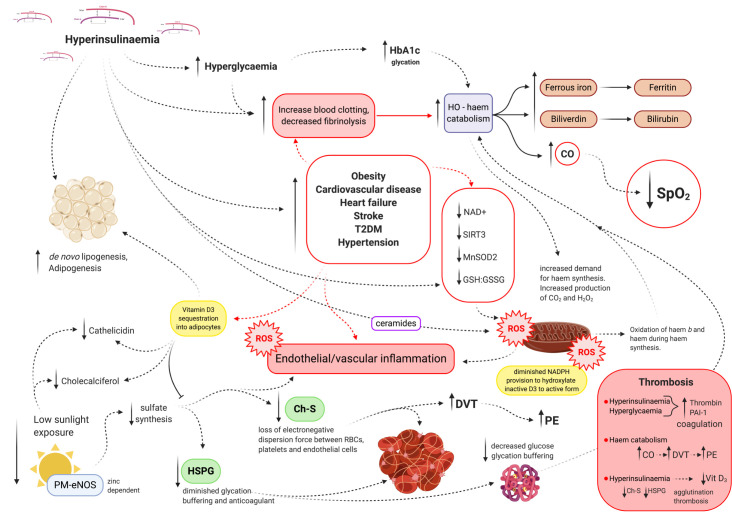Figure 1.
Schematic representation of the role of hyperinsulinaemia in endothelial/vascular inflammation, red blood cell (RBC) and platelet coagulation, sequestration and/or inhibition of vitamin D activation and its downstream consequences, such as decreased cholesterol sulfate (Ch-S), heparan sulfate proteoglycans (HSPG) and cathelicidin synthesis. Carbon dioxide (CO2), carbon monoxide (CO), deep vein thrombosis (DVT), endothelial nitric oxide synthase (eNOS), reduced glutathione (GSH), oxidised glutathione (GSSG), haemoglobin A1c (HbA1c), haem-oxygenase (HO), manganese superoxide dismutase 2 (MnSOD2), nicotinamide adenine dinucleotide (NAD+), plasma membrane (PM), plasminogen activator inhibitor type 1 (PAI-1), pulmonary embolism (PE), reactive oxygen species (ROS), oxygen saturation (SpO2), sirtuin 3 (SIRT3) and type 2 diabetes mellitus (T2DM).

